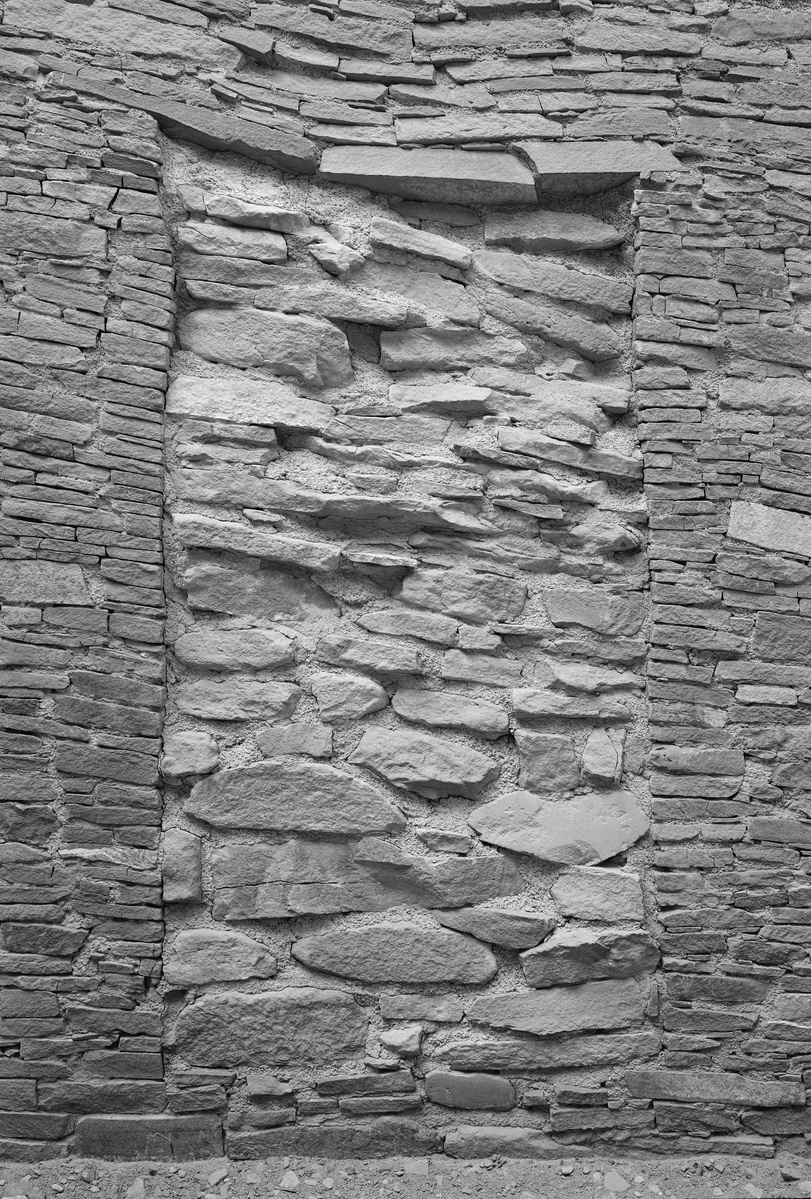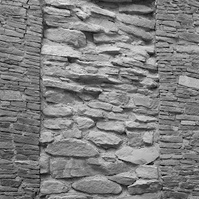Selections from 'Center Place,' 2023-Ongoing, Photography
"When we began our migrations we came up into this world from the world below. The creator telling the people that there are certain places that you are to live and giving them signs of recognition to where these sites are to be found. The migrations began over a period of centuries. Always looking for that place that was to be the center of our world."
- Paul Pino, from "The Mystery of Chaco Canyon"
The Ancestral Pueblo people built their civilization over the course of millennia across the canyons and mesas of the Colorado Plateau. They achieved an effervescence of complexity between the years 800 and 1250 and then quite suddenly abandoned many of their population centers and disarticulated into the dozens of Pueblos that exist today. They were the northernmost Maize eaters, a grain that propelled their built environment, spiritual life and civilizational trajectory. At its maximum extent their world encompassed 95,000 square kilometers and a population of approximately 100,000. They may be best known for their elaborate "Cliff Dwellings," such as the famous Cliff Palace of Mesa Verde, but their most extraordinary characteristic was their attunement to the cosmos. They were the first people, across 300,000 years of human history, to definitively chart the 18.5 year lunar cycle. The axis mundi of their civilization was Chaco Canyon, where massive "Great Houses" were built in complex astronomical alignments, anchoring a system of roads, communities and signal sites as well as a trade network that expanded all the way to the Maya lowlands of Southern Mexico. We know little about the life of these people, they did not use a written script, and there is great debate about the nature of their political organization and ritual life. What is clear is that they were driven to turn their environment into a canvas for the expression of a unique cosmological world-feeling; what defined this endeavor was their search for the Center Place.
Hopi Pueblo author Leigh J. Kuwanwisiwma defines ancestral footprints as “ruins, sacred springs, burials, landscapes, migration passages, artifacts, petroglyphs, and trading routes and trails.” The land was, and for contemporary Puebloans remains, a text that revealed itself to the people. Anthropologist Ruth Van Dyke writes that the Ancestral Puebloans “constructed a sacred geography, playing with visibility, directionality, astronomical alignments, and temporal references to construct their world as a center place, at the nexus of space and time, at an intersection of horizontal and vertical planes.” In Chaco Canyon there are spiral petroglyphs that record, via daggers of sun and moonlight projected between rock slabs, not only solstices and equinoxes but the major and minor lunar standstills. This was the point around which the world turned, a grasping for the divine that attempted to freeze being as image, the search for the Center and time itself become one.
Settler societies impose an idea of land as abstraction; a commodity to be carved up, desacralized, legally titled, fenced, bought, sold and exploited or cleansed of people, set aside as "wilderness," and managed for the performance of purity. Private property and the National Park constitute a dialectic of material and ideological dispossession. Today, we are trained to experience time as linear, it moves “forward” rather than in cycles or phases, and dominates our lives via the disenchantment of the clock, a relentless passing of seconds arranged to achieve the transubstantiation of human beings into what Marx called "appendages of the machine." The emergence of “Art” as a category of thought and action, severed from the umbilicus of a symbolic whole, marks the death of that which goes by its name. Yet even now, in the age of the absolute secularization of experience, photography may still remind us that the world overflows with meaning, even if ultimately it can only reveal our estrangement from it.
It doesn’t end.
In all growing
from all earths
to all skies,
in all touching
all things,
in all soothing
the aches of all years,
it doesn’t end.
- "It Doesn’t End, Of Course," Simon J. Ortiz



























